MSI are refining most of their gaming notebooks lineup for 2020, with revamped editions of the ultraportable GS Stealth series, the performance GE Raider and the budget-friendly GF65 Thin lines.
The MSI GS66 Stealth follows up the popular GS65 Stealth Thin from 2018/2019, which we’ve reviewed in its RTX 2080 version here on the site, but also in its larger GS75 implementation.
It builds on the same principles, as an ultraportable performance laptop with exquisite design lines, but this time around in a redesigned chassis. That’s great news, as the previous GS65 chassis felt rather weak and squeaky, despite MSI’s efforts to strengthen it in the 2019 update.
The GS66’s new build is boxier, similar to the Razer Blade and Asus ROG Zephyrus M.
Update: Our detailed review of the MSI GS66 is available here.
From what I can tell based on the preview-pictures and videos, it’s also marginally thicker and bigger than before, but cleaner as well, with a completely black theme and subtly integrated branding elements: a dark MSI logo under the screen and a dark Dragon Shield on the lid.
| MSI GS66 Stealth 2020 – review | MSI GS65 Stealth Thin 2019 – review | |
| Screen | 15.6 inch, 1920 x 1080 px, IPS equivalent, 240/300 Hz, 3ms, matte | 15.6 inch, 1920 x 1080 px, IPS equivalent, 240 Hz, 3ms, matte |
| Processor | up to Intel Comet Lake Core i9-10980HK, eight-core | Intel 9th Gen Coffee Lake-R Core H, up to Core i9-9880H |
| Video | Intel UHD and up to Nvidia RTX 2080 Super 80W (Max-Q) | Intel HD 630 and up to NVIDIA GeForce RTX 2080 Max-Q with 8GB GDDR6 VRAM |
| Memory | up to 64 GB DDR4 3200 MHz (2× DIMMs) | up to 32 GB DDR4 2666 MHz (2× DIMMs) |
| Storage | 2x M.2 NVME 2280 with Raid0 | 2x M.2 slot, both support PCIe x4 |
| Connectivity | WiFi AX, Bluetooth 5.0, Gigabit Ethernet | Killer Wireless-AC 1550i, Bluetooth 5.0, Killer E2500 Gigabit Ethernet |
| Ports | 3x USB-A 3.2 gen2, 1x USB-C with Thunderbolt 3, 1x USB-C 3.2 gen2, HDMI 2.0, combined mic/earphone, RJ45 Lan, Kensington Lock | 3x USB-A 3.1 gen2, 1x USB-C with Thunderbolt 3, HDMI 2.0, mini-DP, mic, earphone, RJ45 Lan, Kensington Lock |
| Battery | 99 Wh, up to 230W charger | 80 Wh, up to 230 W charger |
| Size | 360 mm or 14.17” (w) x 245 mm or 9.65” (d) x 17.9 mm or .71” (h) | 358 mm or 14.08” (w) x 248 mm or 9.75” (d) x 17.5 mm or .69” (h) |
| Weight | ~2.2 kg (4.65 lbs) | ~1.9 kg (4.17 lbs), .89 kg (1.96) for the charger, EU version |
| Extras | redesigned RGB keyboard, large clickpad, HD webcam and IR cameras, dual-firing stereo speakers | RGB keyboard, large clickpad, HD webcam, bottom-firing stereo speakers |
The entire hinge and back part have been redesigned as well, and I fear this approach no longer allows the screen to fall back flat to 180-degrees, which was a feature I appreciated on the GS65.
The keyboard, clickpad and IO haven’t changed much, with most ports still on the lateral sides, still no SD-card reader and one extra USB-C slot than before, which replaces the miniDP on the GS65. I’m also seeing a combined headphone/mic jack, instead of the dedicated jacks before, and IR cameras at the top of the screen, which the previous Stealth lacked.
Back to that keyboard, I did notice that MSI moved the Windows key to the left, like on most Windows notebooks, but also integrated the Power Buton as the top-right key, pushing the Delete key to the left. Not a fan, and something you’ll need to get used to if upgrading from an older MSI notebook.
The speakers fire through cuts in the palm-rest now, so we should hopefully see in improvement in the audio department over the GS65. Not sure about that positioning, though, as I fear they might be easily obstructed by our hands with daily use. There’s also still a mesh grill at the top of the keyboard, which I expect that to be used for air intake like on the GS65.
As far as screen options go, it looks like this we’ll also get the newer 300 Hz IPS panel that’s been touted for the GE66 Raider series. Not that you should care, anyway, the previous 240Hz options were perfectly suitable for gaming, unless you’re playing shooters at a very, very competitive level.
Aside from the changes we can easily see, MSI further emphasizes on the updates they made beneath the hood. The GS66 gets a hardware bump to Intel’s 10th gen Core-H Comet Lake platform, the latest Nvidia GeForce RTX graphics (we can assume Super refreshes of the current 2060/2070MQ/2080MQ offers) and a 99.9 Wh battery, the largest legal capacity for flying. Furthermore, Power Delivery is now supported via USB-C, at up to 100W, but you’ll need to stick to the larger brick when running games and other demanding loads.
It’s too early to tell much about the performance, wait for our proper reviews for that. On the processor’s side, 10th-gen Comet Lake Core H is just a further refinement of the 14nm process, so I wouldn’t expect more than minor refinements and potentially higher-clocked speeds, as long as allowed by thermals. Also, keep in mind the GS66 is onyl available with either a Core i7-10750H (6Core) or an i9-10980HK (8Core), and not with the 8Core i7-1-875H processor included on most other ultraportables, so you’re being forced to upgrade to the i9 for those 8Cores, thus end up paying a significant premium that could make the GS66 less competitive than some of the other options. Wel’ll see.
This aside, MSI have redesigned the thermal module in the GS66 Stealth, opting for what they call a Cooler Boost Trinity+ design with three fans, very thin .1 mm fan blades and 10% increased airflow over the fans used in the GS65. This is another welcomed update, as the previous GS65 struggled in demanding combined loads due to high thermals and could only accommodate the 80W version of the RTX 2080 chip in its higher tier variant, while some of the competition was able to squeeze in the slightly faster 90W version in their 15-inchers.
RAM and storage haven’t changed much between generations, except for the slight bump to DDR4 2933 MHz memory with Comet Lake. The laptops is, however, a lot easier to upgrade now, as it’s a standard design that only requires you to take out the bottom to get to the components, and not the entire motherboard, as with the previous generations.
All in all, while we don’t have all the details yet, the GS66 Stealth seems to address two of the main GS65’s problems: build quality and performance/thermals. Add in a tuned fan-profile, easier hardware access, improved quality control, and more competitive pricing, and this could get very close to the top-pretenders in its class in 2019, the Asus ROG Zephyrus S and the Razer Blade 15, which won’t probably get more than a hardware bump in the first part of 2020.
No word on pricing and availability just yet, but we’re looking forward to reviewing the updated 2020 MSI GS66 Stealth Thin and share our findings with you, so stay tuned for updates.
Update: Our detailed review of the MSI GS66 is available here.

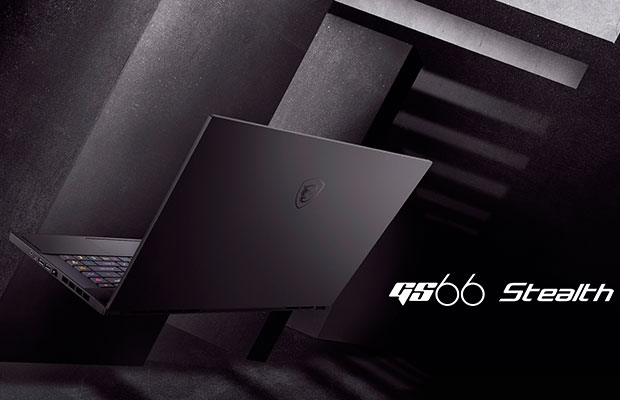
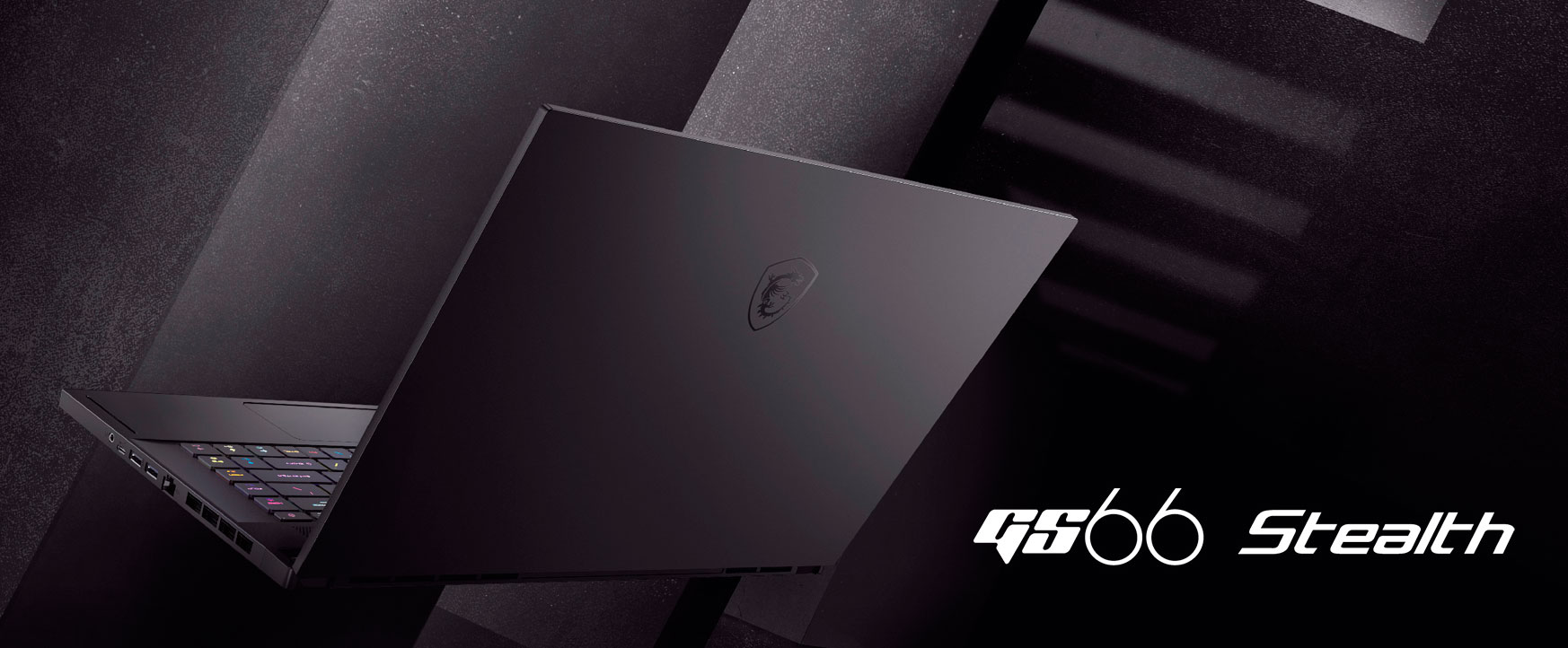
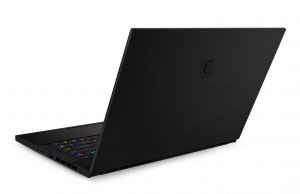
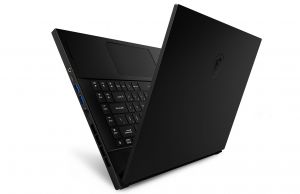
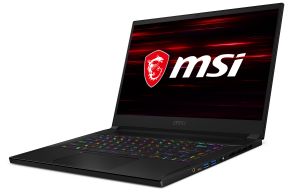




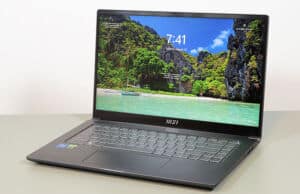






Shunya
January 7, 2020 at 4:13 pm
What about case, is it still super flimsy?
Andrei Girbea
January 7, 2020 at 4:15 pm
It's a complete redesign and MSI were aware of the problem, so probably not. It's also thicker and bigger than on the GS65, which further supports an improved build.
Shunya
January 8, 2020 at 2:41 am
Looks very promising then
And they moved power connector from right side to the right which is plus however swapped fn and win keys which is minus
As for cooling looks like they use 2 fans and 2 heat pipes on gpu and one heat pipe one fan on cpu, I hope i5 will be sufficient
But also it’s very important to have fans inaudible or fully stoped in light load with cpu temp below newly 55C could they setup that?
Ps you have a typo “Razer Balde 15”
Andrei Girbea
January 8, 2020 at 11:48 am
WE'll see about the fan performance and noise, no way to tell without testing.
bittricks
January 9, 2020 at 6:03 pm
Unless MSI equals Razer or Dell XPS case quality – with multiple verified reviews that MSI has finally created robust cases – like tank quality – I won't even look at one.
I watched a guy drop a $3,000 US MSI laptop not even 2 English feet, and the thing snapped, crackled and popped. Instant paper-weight.
Sorry, but I just don't think MSI engineering can get it right because they've been fiddling around, avoiding a fix for the trashy flimsy cases for well over a decade.
David S.
March 25, 2020 at 2:45 am
This is very interesting. If there was an option for a (bright) Pantone Validated 4k screen, I'd be tempted to switch from the Gigabyte Aero 15 OLED.
The 3 fans, giant battery, dual NVMe slots, and USB-C charging are huge plus points.
I still don't have any idea why manufacturers are throwing >144Hz displays into laptops though. Not only are you not going to reliably get frame rates that high, but the people (professionals) who really need those frame rates aren't going to be gaming from a laptop.
I'd much rather see a cheaper, 144Hz 1080p screen with options for a ~100Hz-120Hz 1440p display or a color-accurate, 4k display for people who will do a lot of content creation and a little gaming.
The only downsides I can see are no SD-card reader, one display option, and the "gamer" font on the key caps which are all fairly minor.
Can't wait to see how it performs for gaming, thermally, and in terms of battery life. On paper, it looks like MSI have made an awesome laptop to rival the Razer Blade 15 (240Hz), Gigabyte Aero 15 (240Hz), and Asus Zephyrus S GX502 (240Hz).
Andrei Girbea
March 25, 2020 at 12:58 pm
Yeah, looks so. I'd expect updates for the Blade and Zephyrus as well, but not as major as with this Stealth generation. We should know more around early April when Intel and Nvidia are launching their 2020 hardware.
As far as screens go, a 120/144 Hz QHD would be a good middle ground imo, but there's not such panel yet. Nor is a 120 Hz 4K, and gaming at 60 Hz isn't great due to tearing.
David S.
March 27, 2020 at 4:47 am
It seems manufacturers don't care about 1440p screens in laptops for some reason… It's unfortunate because it seems like a perfect middle ground between the high refresh 1080p screens and 60Hz 4k screens.
With a lockdown in place, I've been gaming a bit more than normal on my Aero 15S OLED XA. I've been playing a lot of Ori and the Blind Forest, Forza Horizon 4, Rocket League, Cities Skylines (about 30Hz on ultra settings), and Dirt Rally 2.0 at 4k, 60Hz and I don't have any complaints. I have noticed some slight tearing in Horizon 4 but enabling v-sync fixes it.
I'll admit I was always a console gamer before this so I've been used to 60Hz for awhile. 60Hz is plenty for the games I play. For triple-A titles, I'll gladly take graphics quality and 60Hz over high refresh rate any day. On top of that, 4k scales down to 1080p nicely so dropping the resolution to 1080p in triple-A titles still looks great if extra frames are needed.
The newest Razer Blade Pro 17 has a 4k, 120Hz, touch-screen option but it's only for models with the RTX 2080 and starts at $3700 (yikes).
Hopefully we see more 4k, 120Hz screens from other manufacturers because I love the resolution (text in documents looks so crisp) but having the ability to play games at 1080p, 120Hz on the same screen would be awesome.
Andrei Girbea
March 27, 2020 at 11:12 am
I've been asking OEMs about this and there are a two reasons for it:
1. the lack of good 1440p panels, especially options with higher refresh rates. Developing such a panel would imply costs, and these would need to be supported by the OEM asking the panel manufacturer for such a specific design.
2. Most people are fine with either FHD high refresh, which is what most push on gaming laptops, or 4K high color accuracy, which is the alternative for creators and those interested in a workstation. I'd expect most OEMs to offer both options on their gaming laptops in the near future.
Point 1 is probably the reason the 4K 120Hz is only bundled with the top configuration, Razer most likely paid highly for that panel to be developed, they probably have exclusivity for a while and need to make that investment back.
I'm with you on the whole subject though, I'm all for a 1440p 120-144 Hz panel as well, preferably with 400-nits of brightness and decent colors. that could be a good jack of all trades for most buyers.
Albert
April 10, 2020 at 5:09 pm
Hello,
When can we expect a proper review? I'm in the market for a new laptop and this one would check all my boxes.
Andrei Girbea
April 10, 2020 at 6:16 pm
I'd say by the end of the month. We still don't have a review unit at this moment.
J. G.
April 24, 2020 at 12:26 pm
I think one of the best improvements they've made to this model is to invert back the motherboard for better maintenance options. Former g65 stealth was quite unpractical and rather difficult to upgrade for the general user, and was backfiring on low ram/ssd models because of that. Nice to see they've addressed it on the G66
Andrei Girbea
April 24, 2020 at 12:29 pm
Yep, I agree. I look forward to spending more time with this, our review is scheduled for sometime around May
Shane
May 9, 2020 at 7:43 am
I'm looking forward to your review on the MSI GS66! I just can't decide on which to get for this unit, the 10 gen i7 or i9 with a super 2070 or 2080…
Andrei Girbea
May 9, 2020 at 8:15 am
What do you need it for? If it's gaming, there's better value in the i7 + 2070 Super version based on my other reviews and tests